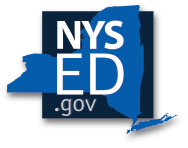Roadmap to College for English Language Learners and Multilingual Learners
A College Access Guide for English Language Learners/Multilingual Learners in New York State
The content on this page is available as a color brochure, suitable for printing: PDF version of tri-fold brochure for printing.
The brochure PDF is now available in eight other languages: Arabic, Bengali, French, Haitian, Karen, Russian, Spanish, and Urdu
Have a Goal
There are many reasons to choose college education as a goal. This chart shows the value of each diploma over a lifetime. These numbers may increase when the candidate is bilingual.
| High School Diploma Only = $1.30 Million |
| Some College = $1.55 Million |
| Bachelor's Degree = $2.27 Million |
| Master's Degree = $2.67 Million |
| Doctoral Degree = $3.25 Million |
| Professional Degree = $3.65 Million |
College graduates earn at least a million dollars more than high school graduates over their lifetime!
Carnevale, A.P., Rose, S.J. and Cheah, B. (2011) The College Pay-off: Education, Occupations, Lifetime Earnings. Center for Education and The Workforce, Georgetown University.
Pew Research Center, February, 2014, “The Rising Cost of Not Going to College”
College graduates…
- have lower unemployment rates
- experience better health
- find interesting careers that maximize their earnings potentials
- report higher levels of happiness
- participate more in the community as shown by higher voting and volunteerism rates
- have higher rates of homeownership, and
- can help their children to earn higher grades in school





